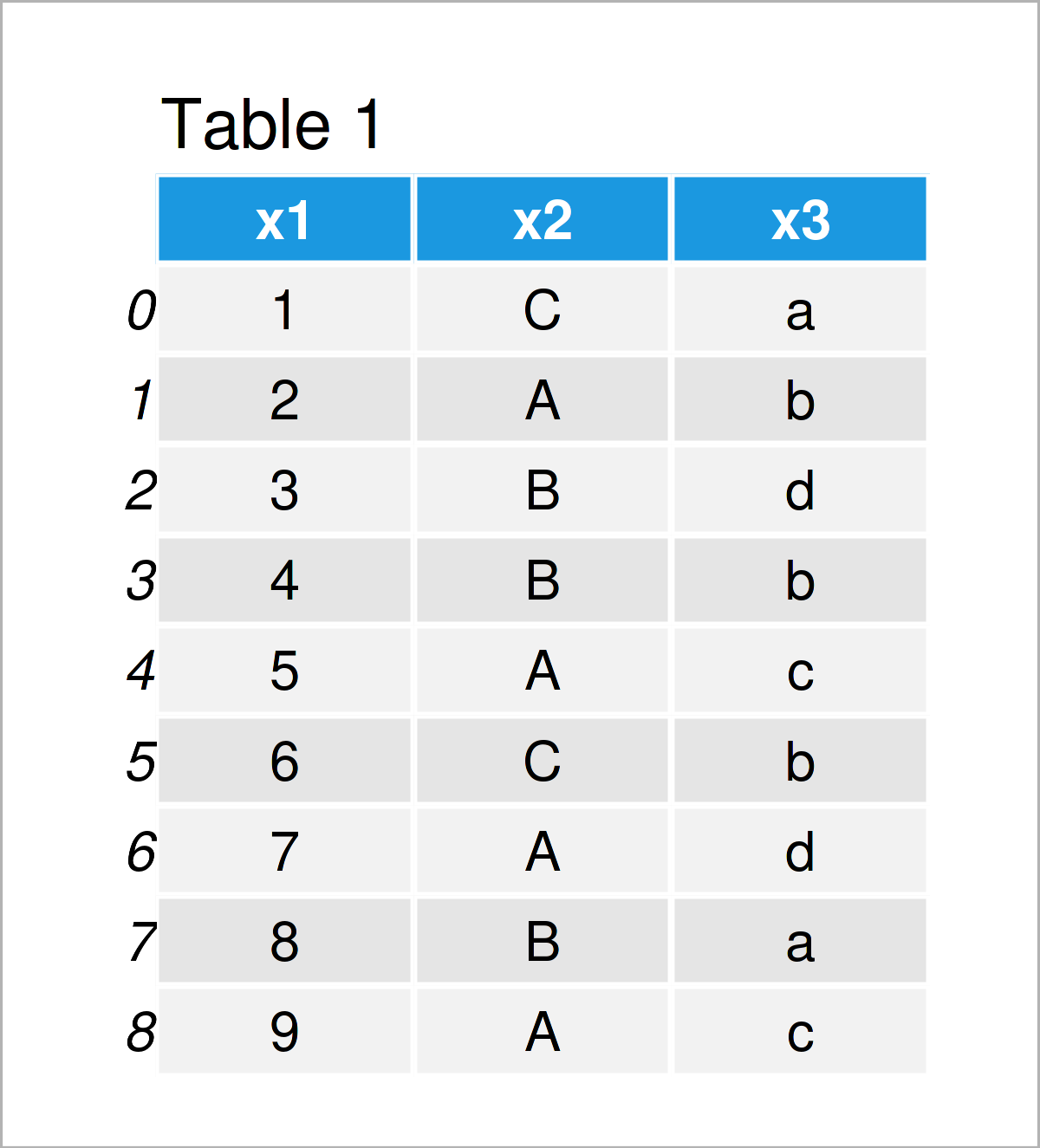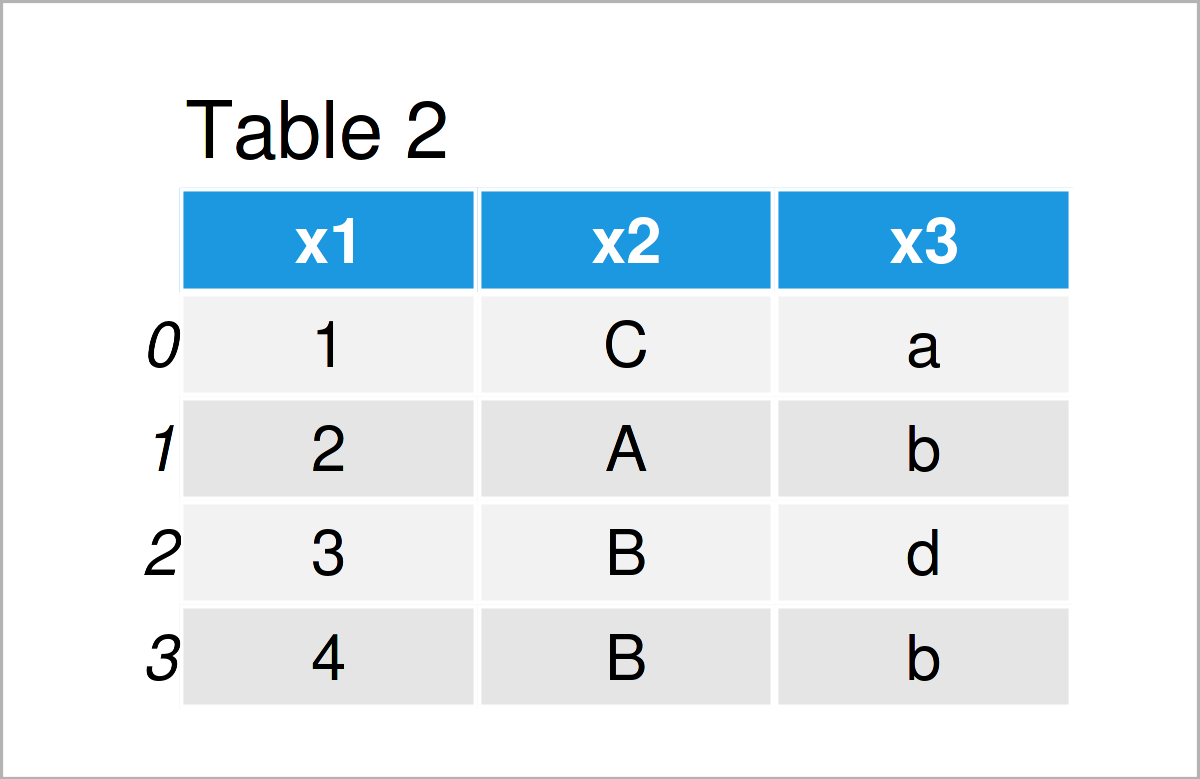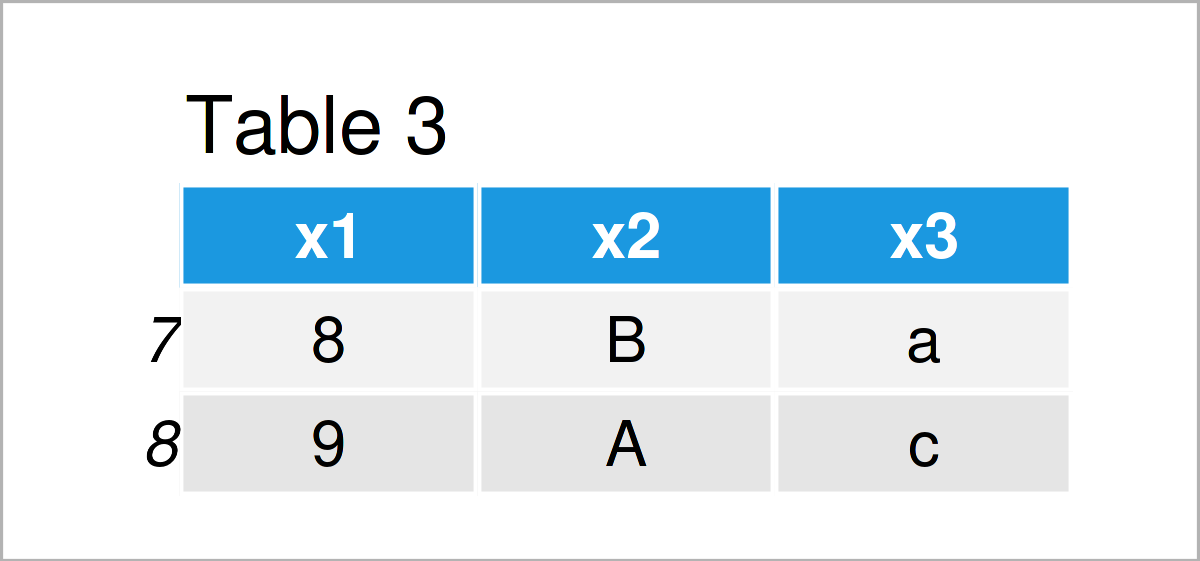Extract Top & Bottom N Rows from pandas DataFrame in Python (2 Examples)
On this page you’ll learn how to select the top and bottom N rows of a pandas DataFrame in Python.
Table of contents:
You’re here for the answer, so let’s get straight to the examples…
Example Data & Libraries
First, we need to load the pandas library:
import pandas as pd # Load pandas library
We’ll also have to create some example data:
data = pd.DataFrame({'x1':range(1, 10), # Create example DataFrame 'x2':['C', 'A', 'B', 'B', 'A', 'C', 'A', 'B', 'A'], 'x3':['a', 'b', 'd', 'b', 'c', 'b', 'd', 'a', 'c']}) print(data) # Print example DataFrame

As you can see based on Table 1, our example data is a DataFrame containing nine rows and three columns called “x1”, “x2”, and “x3”.
Example 1: Return Top N Rows of pandas DataFrame Using head() Function
The following syntax explains how to select only the first few rows of a pandas DataFrame using the Python programming language.
For this task, we can apply the head function. Within the head function, we have to specify the number of rows that we want to extract from our data set.
Have a look at the following Python syntax:
data_head = data.head(4) # Apply head function print(data_head) # Print head of DataFrame

After running the previous Python programming code a new pandas DataFrame called data_head shown in Table 2 has been created.
As you can see, this new data matrix contains only the first four lines of our original DataFrame.
Example 2: Return Bottom N Rows of pandas DataFrame Using tail() Function
Example 2 explains how to keep only the bottom part of a pandas DataFrame.
Similar to Example 1, we can use the tail function to do this. Note that we are specifying the value 2 instead of the values 4 in this example.
data_tail = data.tail(2) # Apply tail function print(data_tail) # Print tail of DataFrame

The output of the previous Python code is shown in Table 3: We have created another pandas DataFrame containing the last two rows of our input DataFrame.
Video, Further Resources & Summary
Have a look at the following video which I have published on my YouTube channel. I show and explain the examples of this tutorial in some more detail.
Still not satisfied? Then I recommend watching the following video on the Data School YouTube channel.
In the video instruction, the speaker explains how to filter and extract certain rows from a pandas DataFrame using the Python programming language – a similar topic to the content of the tutorial shown on this page:
In addition, you may read some of the other Python tutorials on my website.
- How to Use the pandas Library in Python
- Select Rows of pandas DataFrame by Index in Python
- Select Multiple Columns of Pandas DataFrame
- How to Manipulate a pandas DataFrame in Python
- The Python Programming Language
You have learned in this article how to extract the top and bottom N rows of a pandas DataFrame in Python programming. Don’t hesitate to let me know in the comments, if you have any additional questions. Besides that, please subscribe to my email newsletter in order to receive updates on new articles.






